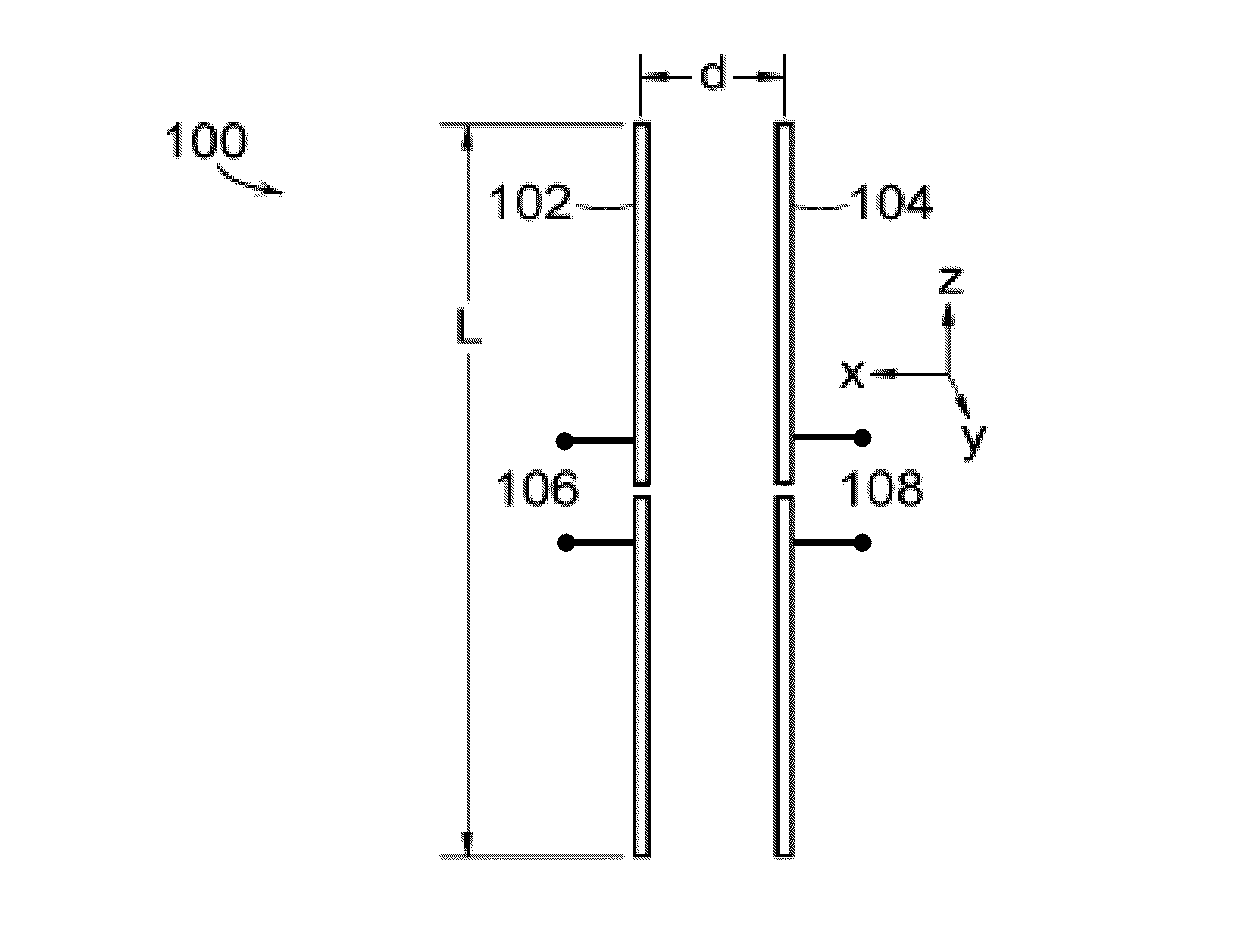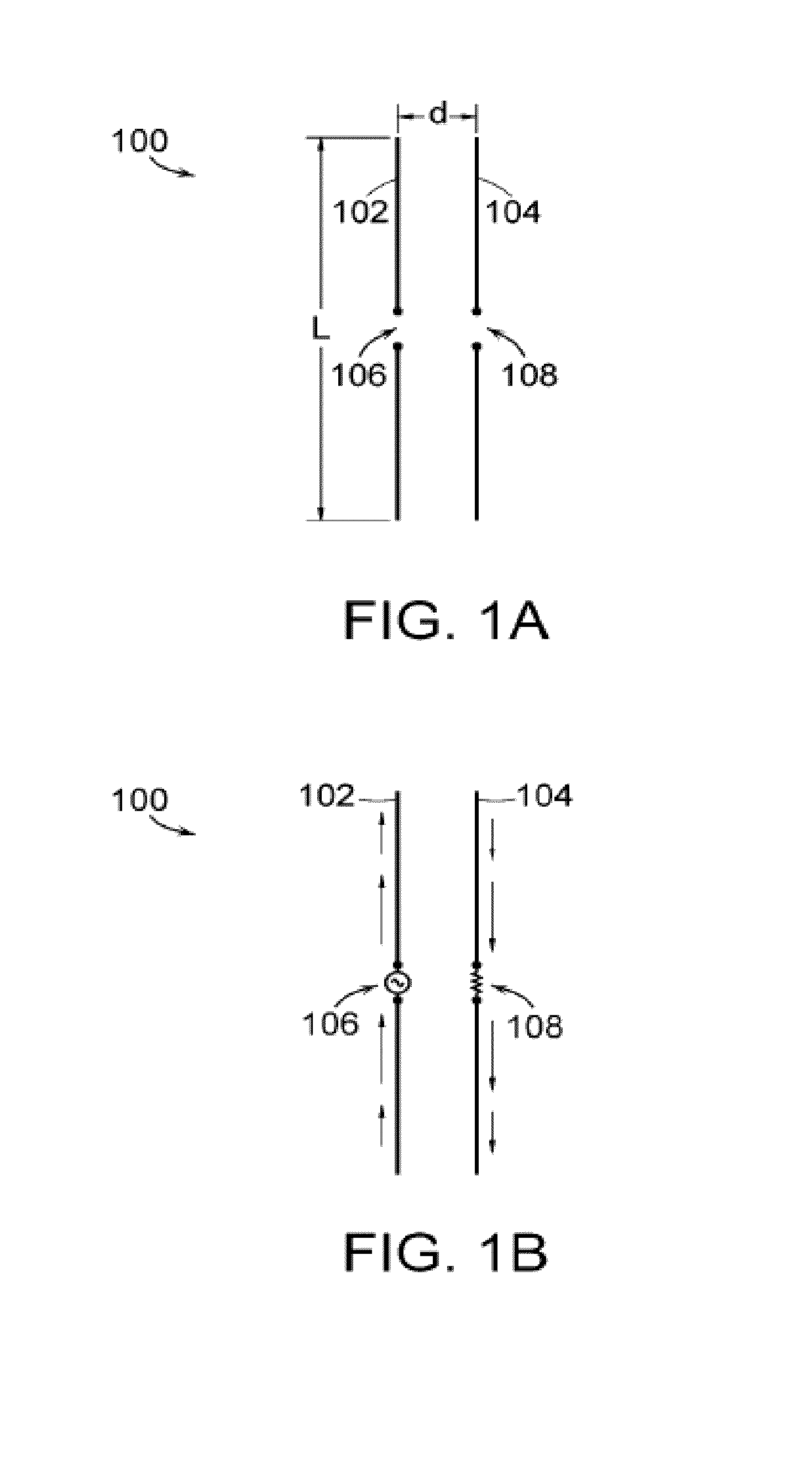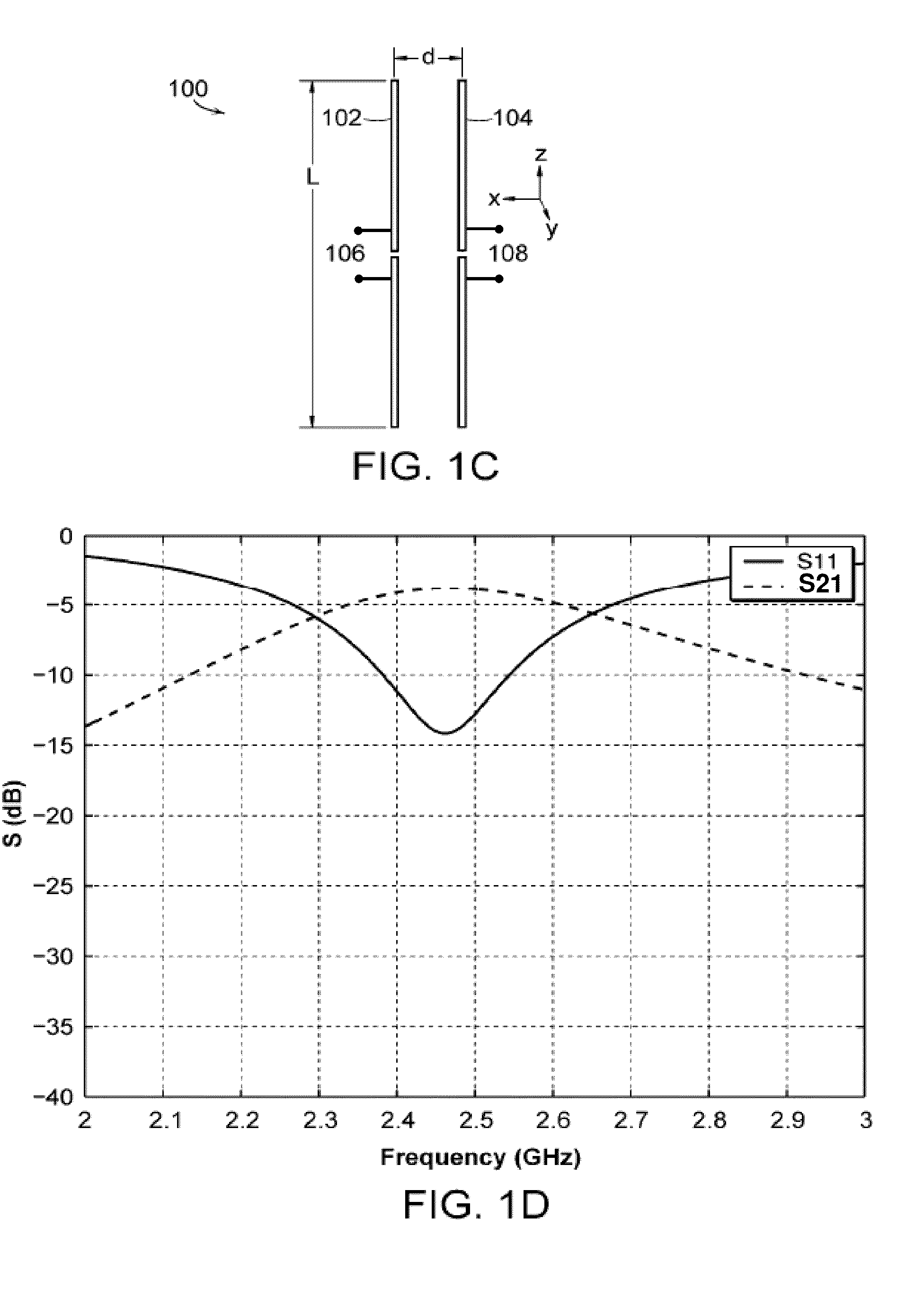Antenna structures and methods thereof that have disparate operating frequency ranges
a technology of operating frequency range and antenna structure, applied in the direction of individually energised antenna array, different interacting antenna combinations, and discrete tuning of pre-tuned circuits, etc., can solve the problems of poor antenna efficiency, complex efficiency-bandwidth trade-off, and e-m simulation tools for accurate prediction
- Summary
- Abstract
- Description
- Claims
- Application Information
AI Technical Summary
Benefits of technology
Problems solved by technology
Method used
Image
Examples
Embodiment Construction
[0116]The subject disclosure describes, among other things, illustrative embodiments for monitoring changes in an operating frequency of an antenna and adjusting the operating frequency of the antenna to mitigate such changes. Other embodiments are described in the subject disclosure.
[0117]One embodiment of the subject disclosure includes a method for measuring, by a circuit, from a first probe a first magnitude of radiated energy by an antenna, where the first probe is placed near the antenna, obtaining, by the circuit, a second magnitude of a signal supplied to the antenna, comparing, by the circuit, the first and the second magnitudes, detecting, by the circuit, an offset in an operating frequency of the antenna based on a difference between the first and the second magnitudes, and adjusting, by the circuit, the operating frequency of the antenna to mitigate the offset in the operating frequency of the antenna.
[0118]One embodiment of the subject disclosure includes an antenna str...
PUM
 Login to View More
Login to View More Abstract
Description
Claims
Application Information
 Login to View More
Login to View More - R&D
- Intellectual Property
- Life Sciences
- Materials
- Tech Scout
- Unparalleled Data Quality
- Higher Quality Content
- 60% Fewer Hallucinations
Browse by: Latest US Patents, China's latest patents, Technical Efficacy Thesaurus, Application Domain, Technology Topic, Popular Technical Reports.
© 2025 PatSnap. All rights reserved.Legal|Privacy policy|Modern Slavery Act Transparency Statement|Sitemap|About US| Contact US: help@patsnap.com



